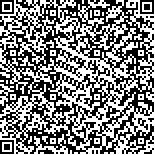| This article has been:Browse 889Times Download 719Times |

scan it! |
|
|
| DOI:10.13522/j.cnki.ggps.2021494 |
|
| Spatiotemporal Variation in Soil Salinization in Daqing Calculated Using the 3S Technology |
|
LIU Fuquan, DU Chong, HAN Xu, LI Rui, HU Zihao, GUO Jiatong
|
|
1. College of Water Resources and Electric Power, Harbin 150080, China;
2. Liaoning Shifosi Reservoir Administration Co. LTD, Shenyang 110166, China
|
| Abstract: |
| 【Objective】Soil salinization is an abiotic stress affecting crop production in most countries across the world. Understanding spatiotemporal dynamics of soil salt at catchment and regional scales is crucial to improving soil management but challenging because of its spatial heterogeneity over different scales. The purpose of this paper is to present a new method to estimate soil salinity distribution at regional scale.【Method】The proposed method is based on satellite imagery. Using salt contents measured at different soil depths and the reflectance of Landsat remote sensing images, an inversion model linking soil salinization with the most sensitive imagery-bands was constructed by multiple stepwise regression analysis methods. The spatial distribution of soil salinization was calculated using the Arcgis. We applied the model to soil salinization data measured from 2001 to 2021 in Daqing, Heilongjiang province. 【Result】①Correlation between soil salt content and the reflectance was better for the surface soil layer (0~10 cm) than for the subsoil; its accuracy can be further improved by mathematical transformations of the reflectance. ②The inversion model constructed by the logarithm of B1 band, the index of B7 band and B7 bands was accurate and stable with R2=0.842 and RMSE=0.290. ③From 2001 to 2021, the areas with mild, moderate salinized soils increased first followed by a decline, while the areas with severe salinization decreased first, following by an increase before falling again. By 2021, the total salinized areas in the studied region were 102 262 hm2. 【Conclusion】 From 2001 to 2021, the salinized areas in Daqing increased first and then declined. In particular, salinization areas in the urban areas decreased fastest. We recommended that soil salinization monitoring should focus on the salinity-laten region at Dumeng and Lindian counties to control their increase. |
| Key words: Daqing; soil salinity; remote sensing; spatiotemporal variation |
|
|